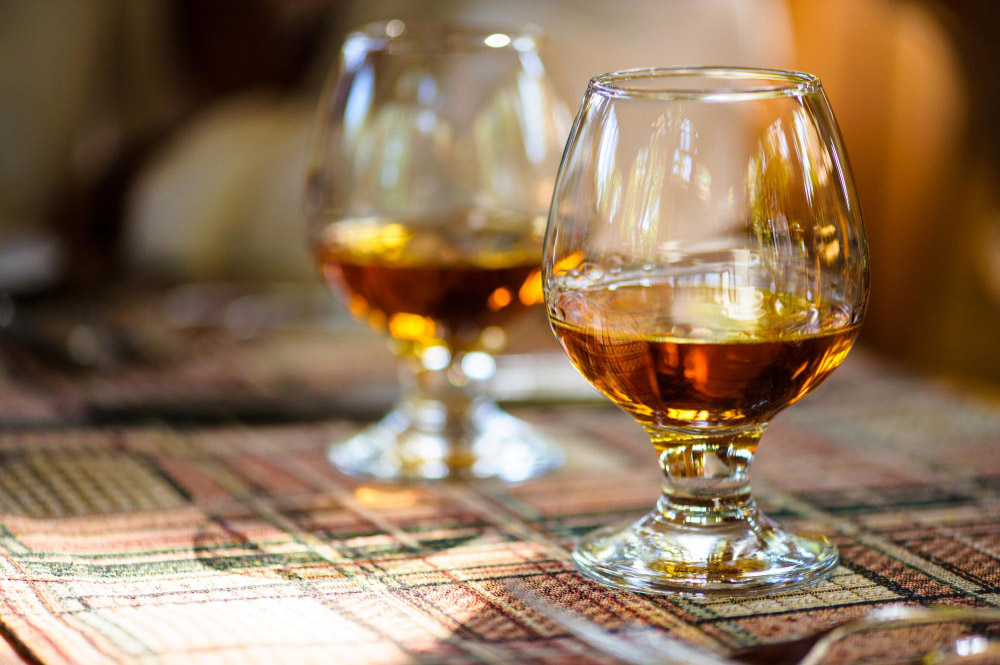We all have some tasty memories of liqueurs: Guignolet in the back of grandma's cupboard, crepes flambéed with Grand Marnier, a sunny summer with a glass of Limoncello... But what do we really know about liqueurs? 🤔 Where do they come from, how are they made and consumed?… Quai Sud invites you to discover the world of liqueurs in the four corners of the world and the different ways of tasting them.
What exactly is a liqueur?
Basically, a liqueur is a spirit drink made from alcohol flavored with all kinds of ingredients: herbs, seeds, flowers, fruits... but also eggs or cream which flavor either a neutral alcohol or a spirit (gin, cognac, vodka, etc.). Sugar is then added in varying proportions.
The aroma extraction method differs depending on the ingredients and to preserve their color:
- cold extraction generally for fruits and plants, either by infusion in water, or by maceration in alcohol. The liquid obtained is then distilled.
- Cold extraction by percolation : ingredients come into contact with alcohol under pressure. This concerns, for example, the coffee liqueur or mint.
- Hot extraction by distillation in a still, especially for spices, seeds and bark.
The sugar is added last, before possible aging of these alcoholates in vats or oak barrels.
the liqueur name meets specific criteria:
- Between 15% and 55% alcohol,
- 100 g of sugar per liter, with the exception of cherry liqueurs (70g) or gentian liqueurs (80g),
- For liqueur creams, it's 250g of minimum sugar except for the Dijon crème de cassis (400g per liter to maintain its IGP 😮). Not to be confused with the cream liqueurs, made from dairy products.
The different liqueurs around the world

Now that you know everything about how liqueurs are made, let's talk about their origins. The first liqueurs were made in France and Italy during the Middle Ages. In the XNUMXth centuryrd century, the monks made it with medicinal herbs from the herb garden and brandy... No wonder that we have long considered the botanical liqueurs like “tonic” remedies! 🥴
The liqueurs then spread around the world taking on local flavors:
- Coffee in Mexico (Kahlua),
- Exotic fruits in Cambodia (Sombai),
- Bitter orange in Curaçao in the West Indies,
- Cocoa and cream, cream liqueur Irish whiskey (Baileys) 🥃,
- Egg yolks in the Netherlands (Advocaat),
- Salted licorice in the amazing Finnish liqueur Koskenkorva Samialkki,
- In Italy, make way for Amaretto with almond and Limoncello with lemon,
- Finally, around the Mediterranean basin, anise-based liqueur predominates: Greek Ouzo, Italian Sambuca, and of course Pastisour pastaga Marseille!
Let's stop there, because there are hundreds of liqueurs around the world, but France remains the world champion in this area! 🐓🥳 There are the monastics (Benedictine, Chartreuse), the mountain women (Gentiane, Genepi, Sapinette…), those based on bitter orange (Grand Marnier, Cointreau) or red fruits (Crème de cassis, Chambord, Guignolet)… There is bound to be one that you like. Now let's taste!
Liqueurs: time for tasting!
Traditionally, liqueurs were enjoyed as a digestif, but “digeo” has gone out of fashion over time. Liqueurs, however, retain an important place in the kitchen, to flambé desserts or to give them roundness. For example, chocolate liqueur sublime a coconut mousse, a tiramisu or even an exotic fruit ice cream: delicious 👌
Today, liqueurs are reinventing themselves thanks to new consumer trends. They are used in the composition of cocktails that have become references (Blue Lagoon with curaçao, Cosmopolitan with Cointreau, Chimayo with blackcurrant cream…), but also in revisited cocktails which are striking to please a young and trendy clientele:
- Aviation Cocktail, with gin, Maraschino and crème de violet,
- Blackberry Mojito, a mojito with blackberry or blackcurrant cream 🍸,
- Saint-Germain, with Prosecco and elderflower liqueur, etc.
Discover the new range of Quai Sud organic liqueurs!
Aphrodite, Athena, Hera… The most beautiful goddesses of Olympus rushed to illustrate our liqueurs with captivating scents of ginger, coffee and chocolate! There is also Noëlle, who absolutely wanted to be under the tree for New Year's Eve with her sweet spices, and Lutine, the youngest full of character whose botanical composition is a jealously guarded secret 🤫. And what about Black Pastis, the completely crazy pastis with liquorice extract! Liqueurs that rock and are just waiting for you.
Alcohol abuse is dangerous for your health, consume with moderation.







